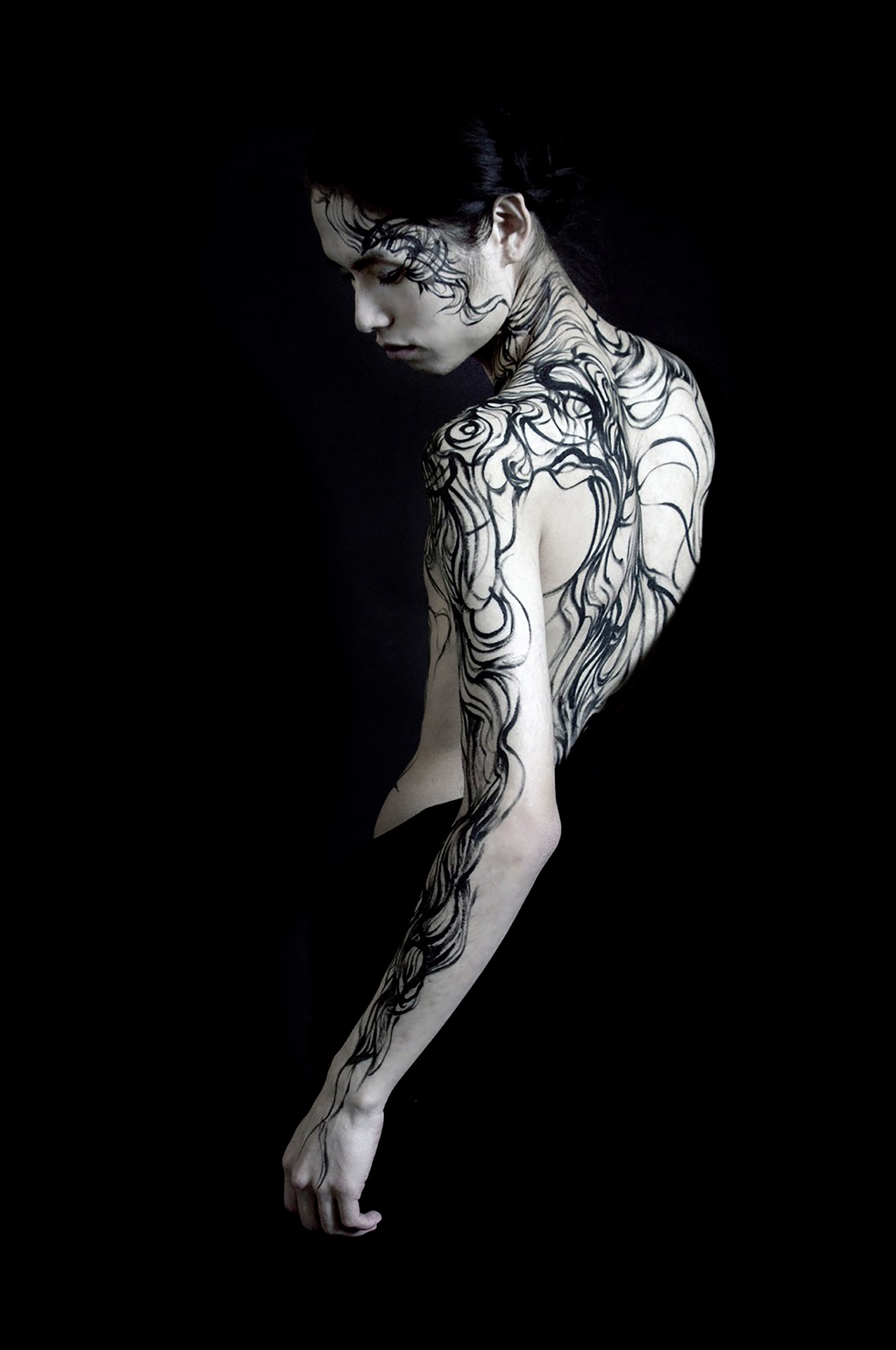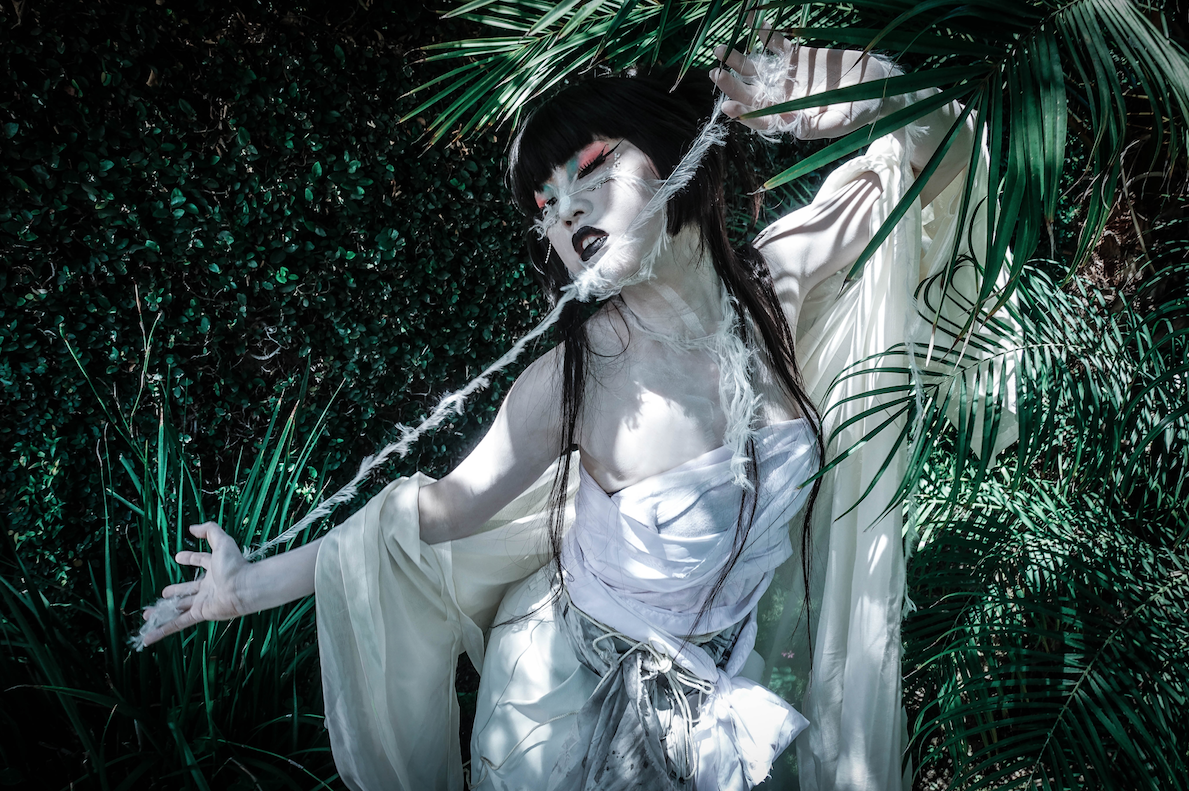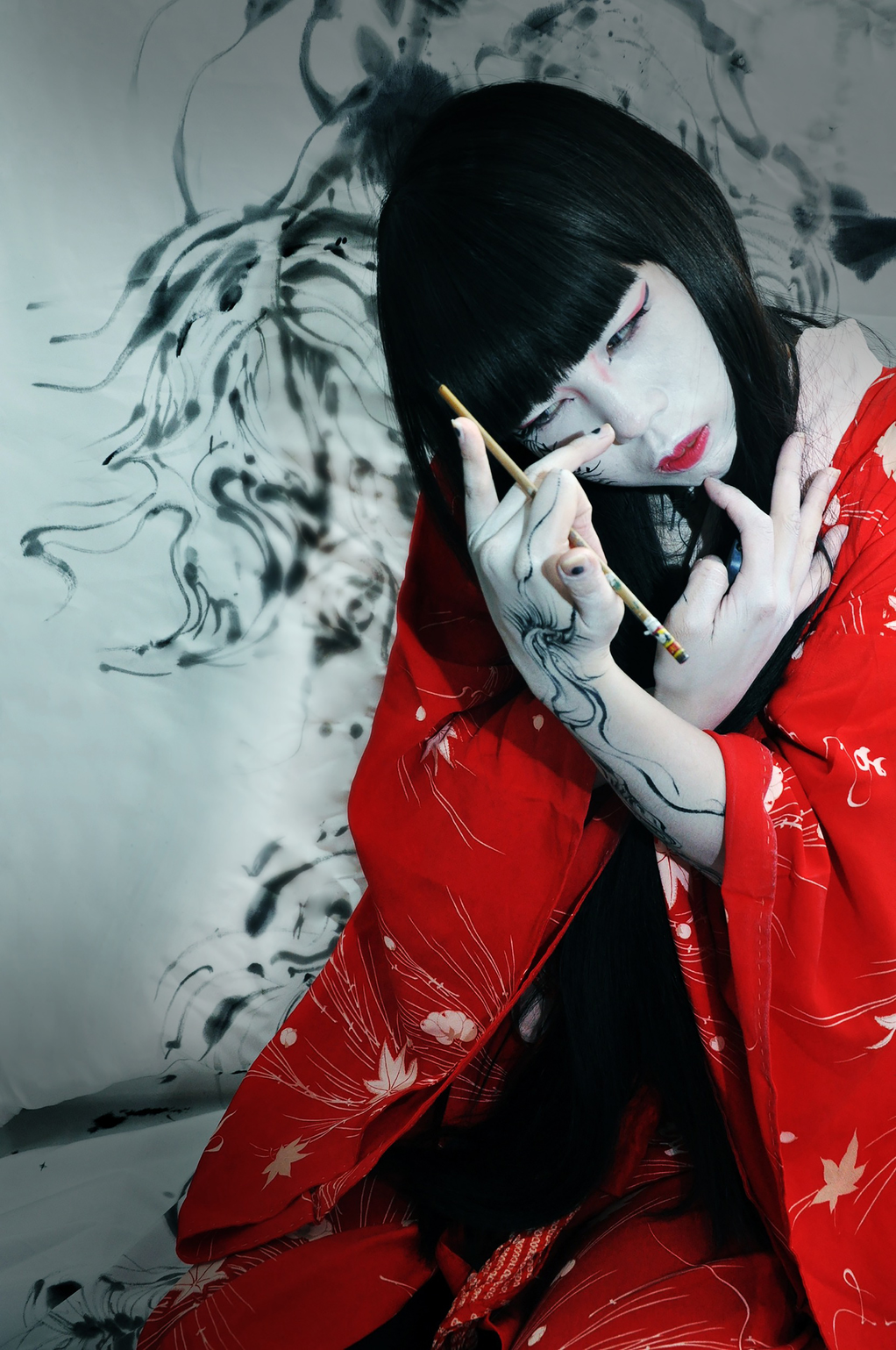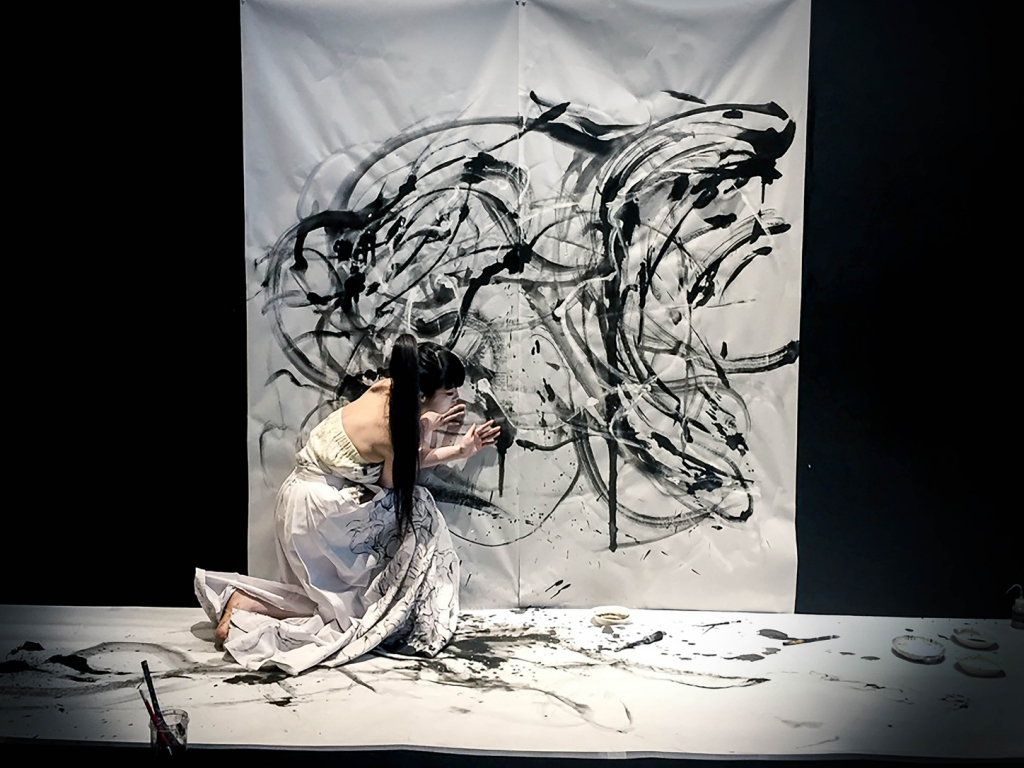At five years old, Ibuki Kuramochi could often be found drawing portraits of customers at her grandfather’s sake shop in Gunma Prefecture, delighting them with her already impressive talent. Later at age 12, during a visit to a temple in Nara with her family, she had a profound experience upon seeing Ikuo Hirayama’s “Silk Road” series of paintings for the first time. With great sincerity, she recalls the impact of the paintings and the beginning of an artistic awakening: “At that moment, I traveled the Silk Road through his paintings, and I could feel Hirayama’s powerful soul and strong spirit…. I dreamed that I would someday become a great artist who would make powerful art like Hirayama.”
Over time, the young artist gathered further inspiration from both Western and Japanese artists, including the painting and poetry of William Blake, the ink and wash paintings of Sesshu Toyo, the copperplate etchings of Shin Taga, and the Japanese woodcuts-inspired ink drawings of Aubrey Beardsley. These influences are all apparent in Kuramochi’s work, especially in her mostly monochromatic palette and the recurring explorations of light and dark, life and death. Her painting ranges from delicate and detailed strokes with a controlled and practiced hand, to wild and raw mark-making led by her whole body in improvized live performances incorporating Japanese butoh dance. Whether on fabric, canvas or directly onto the body, her intricate lines and movements are bursting with expression, making a striking impact upon the viewer.

Butoh is a modern art form, which by its own ethos is notoriously hard to define. An avant garde kind of dance theater, it originated in 1959 as a reaction to both Japanese and Western dance movements, creating a new aesthetic and style. Kuramochi studied at the prestigious Kazuo Ohno Butoh Dance Studio in Yokohama under the tuition of Yoshito Ohno, son of one of butoh’s original creators, Kazuo Ohno (also known as “The Soul of Butoh”).
“My butoh master, Ohno-san, told me that ‘butoh is love’. To see everything through pure eyes, that is a core point of butoh,” says Kuramochi. She had been immediately drawn to the dance movement after seeing a video of a butoh dancer exhibited as part of a Francis Bacon exhibition held in Tokyo. “I searched for the best butoh teacher in Japan. I studied with Ohno, and I was immediately impressed with butoh, and I felt a connection to my soul. Soon afterwards, I started to combine live painting with butoh dance.”
“When I perform dancing and painting at the same time … my spirit goes to another world”
“Butoh’s thinking is ‘the body has everything’, and to ‘cherish the inside more than outside’,” she continues. “When I perform dancing and painting at the same time, the feeling is very special. My spirit goes to another world, I can feel everything, like being possessed by a spirit – but not in a bad way! For me, butoh is part of my soul and my expression.”

Now 28, Kuramochi’s unique and organic approach to art making and creative fluidity has already yielded a variety of diverse opportunities. In addition to exhibitions of paintings in a variety of galleries and venues, including a temple in Tokyo, she regularly collaborates with musicians and dancers. She has also appeared in a music video, had a part in designing apparel for a fashion brand, and even helped in producing a stage set. So far, her work and performances have been shown extensively in Japan, as well as at events in Italy, Taiwan, Australia and France. In 2016 she was invited to participate in the Japan Expo in Paris, the largest convention of Japanese culture held outside of Japan, and she returned to France in 2017 for a string of performances.
Overseas Japan expos and conventions tend to focus on the nation’s lucrative pop culture exports such as character goods, anime and pop idols, with traditional arts and culture aspects taking a segregated backseat. However, as the positive reception to Kuramochi proves, there is an increasingly enthusiastic appetite for discovering a wider array of Japanese arts and culture, especially contemporary and underground artists. Kuramochi’s shows in France captivated audiences with her mystical costumes and striking live performances. And she welcomed the chance to share her unique Japanese spirit.
“From my experiences in Europe, I’ve realized that many people are interested in butoh and Japanese culture in general. Of course, I hope it will continue to grow, and I will do my part to encourage that,” she tells TW. “When I performed at Japan Expo in Paris, I felt that both cultures mixed well. I think it is equally important to preserve Japanese traditional culture as it is to create new forms of art.”

Here in Japan, the relationship between traditional and contemporary culture is also evolving at a rapid pace. As in Paris, it is the artists and creators who are leading the way in facilitating new collaborations while simultaneously preserving and reinventing Japanese culture. “I think young Japanese people are interested in global trends, but they are also interested in Japanese original culture,” says Kuramochi. “Pop culture is now also part of Japanese culture.”
As she continues to travel on her journey, she is dedicated to disseminating her art to new audiences, hoping for even more opportunities to exhibit and perform outside of Japan in the future. “Ten years from now, when I look back, I hope I will see that I was a very effective cultural bridge between Japan and the world.” Her aspirations are bold, but they are as genuine and powerful as her brush strokes.
More information at www.ibuki-kuramochi.com
Updated On April 26, 2021









